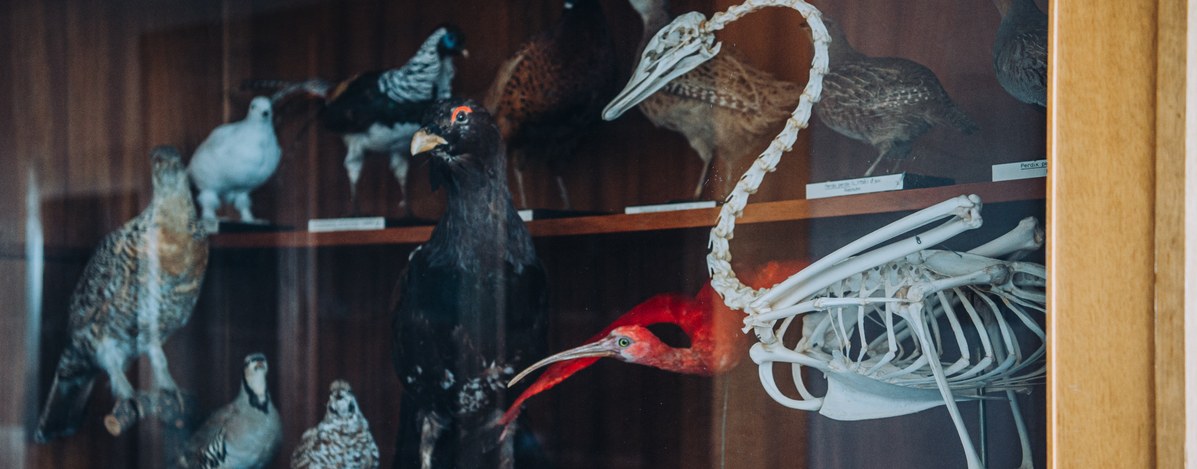Zoological Collection of JLU Giessen

The zoological collection of Justus Liebig University comprises mostly native animals, which the taxidermist who was still working at the institute at that time collected and prepared from the 1960s to 1980s. However, more exotic animals such as giant toucan or spherical armadillo also became part of the collection. Additionally, some historical exhibits have been preserved (e.g. a bluethroat from 1907). In total, various rooms on the 4th floor of the Carl Vogt Haus on Heinrich-Buff-Ring house about 500 standing specimens and skulls of mammals, about 600 standing and bellows specimens of birds, 120 clutches and some nests, an alcohol collection with 32 reptiles and amphibians, 126 fish and various invertebrates, a mollusc collection, plastinates, and anatomical models of various animal species. An important part of the collection is the fauna of Vogelsberg, which is located in the zoological research station Künanzhaus in Upper Vogelsberg. This collection includes another 135 vertebrates (bellows and skulls of birds and small mammals), as well as an extensive insect collection (about 100 boxes) with a focus on beetles and butterflies. Exhibits from the collection are still used in teaching, for example, as illustrative, practice, and examination material in identification exercises and zoology courses. Specimens are also made available for non-university teaching events or for scientific publications. Periodically, we display selected animal specimens on current ecological or zoological topics in the showcases of the Institute of Animal Ecology (4th floor, IFZ).
Contact
Dr. Birgit Jauker
Literature:
- Birgit Jauker/Nikola-Michael Prpic-Schäper, Zoologische Lehrsammlung. In: Alissa Theiss/Michael Lierz (eds.), SACHVERSTAND. Die Sammlungen der Justus-Liebig-Universität Giessen (Giessen 2021), pp. 115–121.
- Eva Diehl/Birgit Jauker/Christian Albrecht/Thomas Wilke/Volkmar Wolters, Giessen: University Collections: Justus Liebig University. In: Lothar A. Beck (ed.): Zoological Collections of Germany. The Animal Kingdom in its Amazing Plenty at Museums and Universities (Cham 2018), 373–381.
